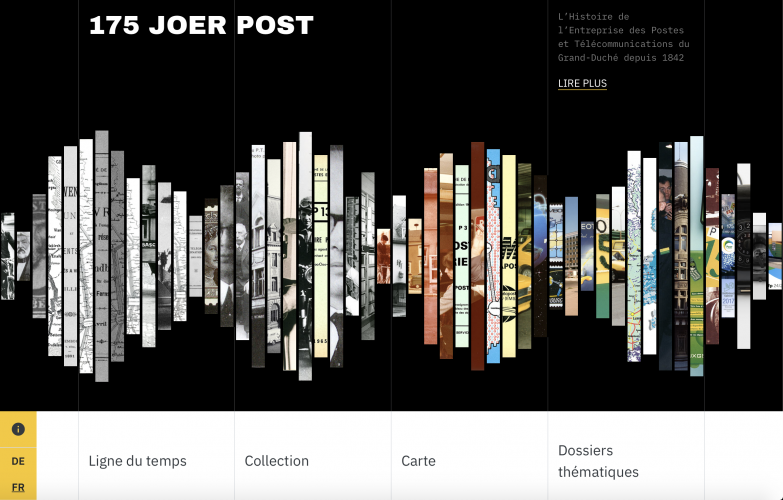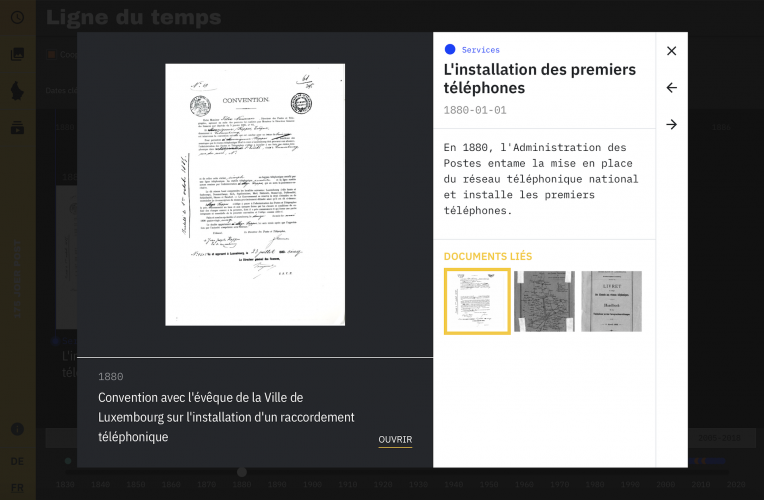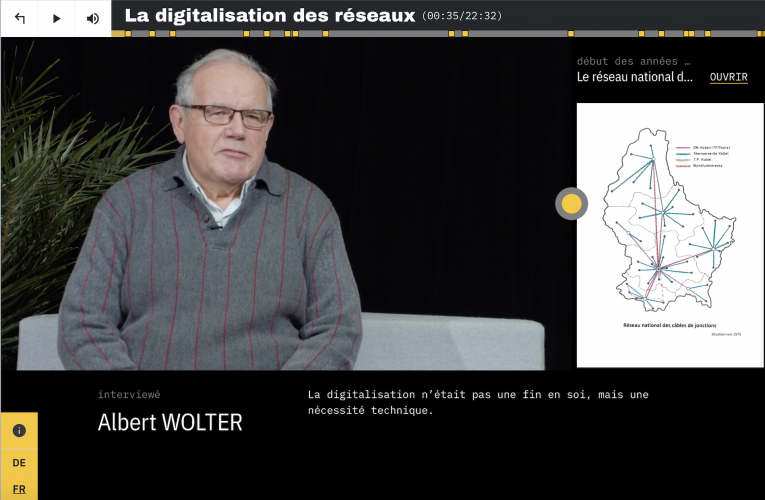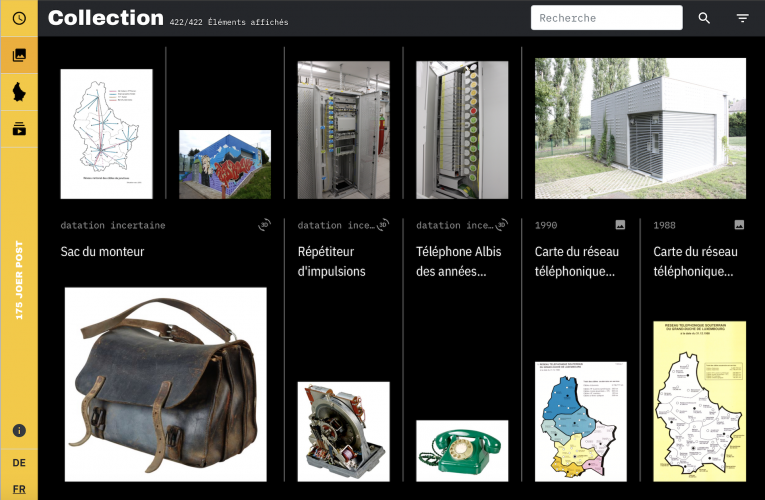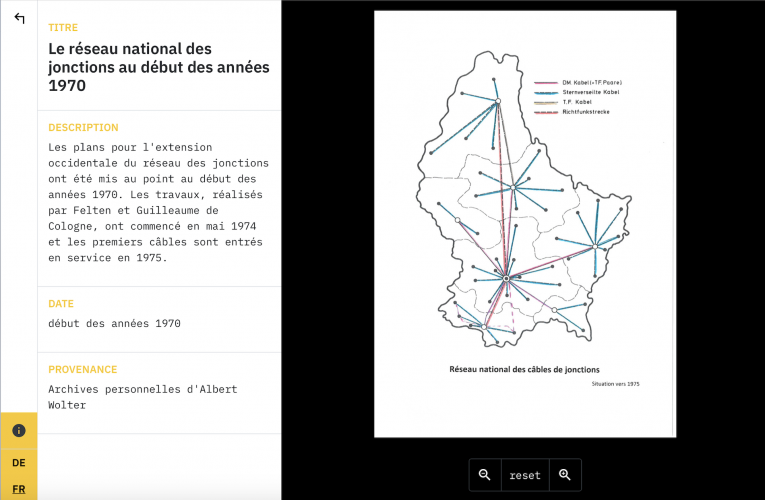Digital exhibition
175 years of POST Luxembourg
Can you imagine a day without your mobile phone, without watching TV or browsing the latest news online (or alternatively reading it in a newspaper that was delivered to your house at the crack of dawn)? For most people, the answer would probably be no. In 2017, POST Luxembourg, the company that operates many of these services in Luxembourg, celebrated its 175th anniversary as an independent national institution. This anniversary was the starting point for a collaboration between the public establishment and the C²DH with the aim of developing a virtual exhibition about the history of postal and telecommunications services in Luxembourg.
Since 1842, POST Luxembourg has served as a catalyst for the country’s modernisation. But research on the institution is largely lacking in the Luxembourg historiography. To begin to bridge this gap, 175 Joer POST set out to propose a modern, bilingual presentation of the history of POST via the essential 21st-century medium of the internet.
Adopting its own interpretation of Henry Jenkins’ concept of transmedia storytelling,[1] the virtual exhibition offers four browsing modes: a timeline, an interactive map, a digital collection and a series of oral history interviews on specific themes. These four sections can be explored independently, although they are all interconnected.
Personal testimonies
In 2020, major progress was made on the thematic part of 175 Joer POST. Instead of sticking to conventional text-based presentation techniques, the thematic sections all feature oral history interviews. These interviews, conducted with current or retired POST employees, explore key events that the interviewees oversaw or witnessed at first hand during their careers at POST Luxembourg.
The site currently has ten thematic sections:
- The digitisation of telecommunications networks
- The introduction of the GSM standard in Luxembourg
- The design office – in charge of planning
- Radio communication in Luxembourg (1964-1980)
- Radio communication in Luxembourg (1981-1994)
- POST Courrier – a wide range of professions
- The daily life of a postie
- The EMD exchange at Luxembourg railway station
- The satellite era – technical aspects
- The satellite era – legal aspects
These thematic sections are not exhaustive; instead they reflect the aim of the virtual exhibition to be accessible to the general public. They focus on milestones, anecdotes and the personal memories of those involved.
The early days of the satellite industry in Luxembourg, for example, were not a linear sequence of well-coordinated stages. Eyewitness accounts allow us to piece together a real-life thriller, with secret meetings between Luxembourgish and American experts, a race against time to secure the necessary frequencies, and an international scandal when little Luxembourg dared to stand up to the titans of the market.
History through objects
The research conducted in 2020 also focused on another essential dimension of the project. The history of POST Luxembourg is also a material history, and it is impossible to present the development of these networks without the objects that were vital to their success. Again reflecting a desire to go beyond written texts, the virtual exhibition features high-resolution 360° images of around 20 objects. For each object, 24 individual photos show the item from all angles and can be consulted at six levels of optical zoom, without any loss of precision.
Users interested in telephones can explore the intricate details of a pulse repeater, a crucial component of EMD telephone exchanges from the 1950s onwards.
All the sections of the virtual exhibition are based on historical sources from the POST Luxembourg archives which have been digitised and are accompanied by explanations.
The 175 Joer POST virtual exhibition was launched in June 2020 and can now be consulted at www.175joerpost.lu. But that’s not the end of the story.
The collaboration between POST Luxembourg and the C²DH will also result in a PhD thesis on international relations at the institution and the role of its experts in international (tele)communications bodies.
[1] Jenkins, H., “Transmedia Storytelling. Moving characters from books to films to video games can make them stronger and more compelling”, in MIT Technology Review, 15.01.2003. Article consulted online on 10.10.2019, https://www.technologyreview.com/s/401760/transmedia-storytelling/.


